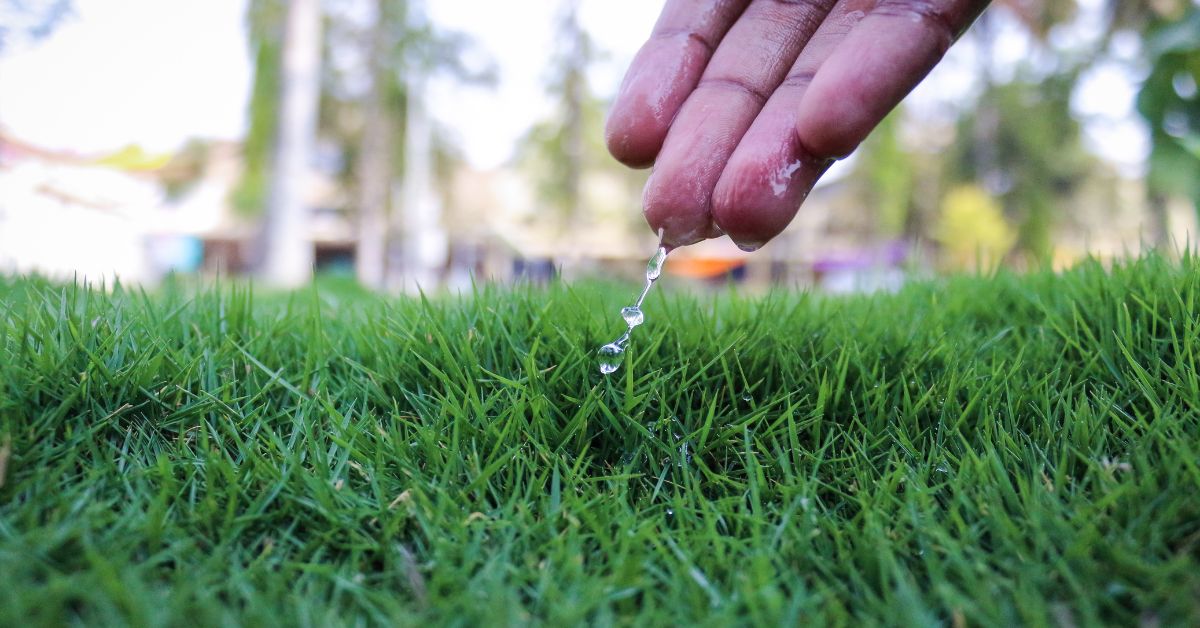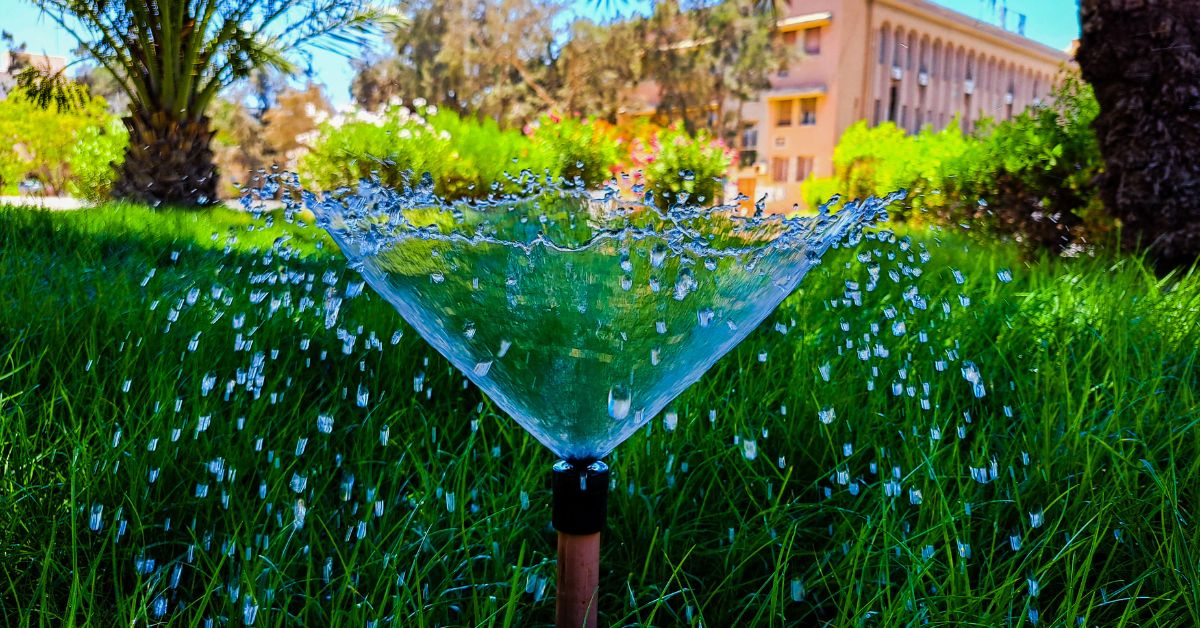Maintaining a lush, green lawn in Florida can be a bit tricky, especially with the hot and humid climate. Understanding how often to water grass in Florida is essential for achieving a healthy and vibrant lawn. In this article, we’ll discuss everything you need to know, from the ideal watering schedule to factors that affect water requirements, and tips to save water while keeping your lawn looking great. Whether you’re a Florida native or new to the area, you’ll find valuable insights to ensure your grass thrives all year round.
How Florida’s Weather Affects Grass Watering Needs
The hot, sunny, and humid climate of Florida plays a significant role in determining how often you need to water your grass. During the summer months, the heat can cause grass to dry out quickly, requiring more frequent watering. On the other hand, the rainy season in Florida, especially from June to September, may reduce the need for watering. Understanding the seasonal changes and how they affect soil moisture is key to developing the right watering schedule.
During the rainy season:
During the rainy season in Florida, your grass typically requires less frequent watering as natural rainfall provides sufficient moisture. It’s important to monitor rainfall patterns to avoid overwatering, as too much water can lead to root rot. Adjust watering schedules to maintain a healthy balance for your lawn.
In the dry season:
In the dry season, Florida’s grass requires more frequent watering due to the lack of rainfall. Aim to water once or twice a week, ensuring the soil receives 1 to 1.5 inches of water each time. Deep watering encourages root growth and helps your lawn withstand the heat.
Winter months:
During the winter months, grass in Water Your Lawn in Florida, and watering needs decrease. Watering once every two to three weeks is usually sufficient to keep the soil moist. Overwatering can stress the grass, so it’s essential to adjust your watering schedule according to the cooler temperatures and reduced growth.
Best Grass Types for Florida Lawns
Not all grass types are equally suited for Florida’s weather. Some types thrive in the state’s unique conditions and require less frequent watering. Popular grass types in Florida include:
St. Augustine Grass:
St. Augustine grass is a popular choice for Florida lawns due to its lush, dense growth and ability to thrive in warm, humid climates. It requires moderate watering and does well in both sun and partial shade. Regular mowing and proper care help maintain its vibrant green appearance throughout the year.
Zoysia Grass:
Zoysia grass is a heat-tolerant, low-maintenance grass variety ideal for Florida lawns. It requires less frequent watering once established and thrives in both sunny and partially shaded areas. Zoysia is drought-resistant, making it an excellent choice for water conservation while maintaining a dense, lush lawn throughout the year.
Bermuda Grass:
Bermuda grass is a drought-tolerant, warm-season grass perfect for Water My Lawn in Florida hot climate. It thrives in full sun and requires minimal watering once established. Known for its resilience and dense growth, Bermuda grass is an excellent choice for low-maintenance lawns, offering a durable and vibrant green lawn even during dry spells.
Each grass type has different water needs, so it’s important to choose the right one for your lawn to minimize water usage.
How Often Should You Water Grass in Florida?
Ideal Watering Frequency for Florida Grass
Watering your grass too much or too little can both lead to problems. Here’s a general guideline for how often to water grass in Florida:
During Summer (June – September):
During the summer months (June – September) in Florida, grass requires more frequent watering due to the intense heat and dryness. Water once or twice a week, providing 1 to 1.5 inches of water each time. Deep watering encourages strong root development, helping your lawn survive the summer heat.
During Winter (December – February):
During the winter months (December – February) in Florida, grass growth slows down, and watering needs are minimal. Watering once every two to three weeks is typically enough to keep the lawn healthy. Avoid overwatering, as the cooler temperatures and reduced growth rate require less moisture for the grass.
During Spring (March – May) and Fall (October – November):
During Spring (March – May) and Fall (October – November) in Florida, grass growth picks up with milder temperatures. Water once a week, unless there’s significant rainfall. These seasons provide ideal conditions for grass to thrive, so moderate watering ensures a healthy, lush lawn without over-saturating the soil.
Factors That Influence Watering Needs
Several factors can affect how often to water your grass in Florida. These include:
Soil Type:
Soil type plays a significant role in determining how often to water your grass. Sandy soils drain quickly, requiring more frequent watering, while clay soils retain moisture longer. Understanding your soil type helps you adjust watering schedules to prevent over or underwatering, ensuring optimal grass growth and health.
Grass Variety:
Grass variety influences watering needs, as different types have unique moisture requirements. For example, drought-tolerant varieties like Bermuda grass require less water, while lush grasses like St. Augustine need more frequent watering. Choosing the right grass for Florida’s climate helps maintain a healthy lawn with minimal water usage.
Sun Exposure:
Sun exposure affects how often you need to water your grass. Lawns in full sun dry out faster and require more frequent watering to stay healthy. In contrast, grass in shaded areas retains moisture longer and typically needs less water. Adjust watering schedules based on the amount of sunlight your lawn receives.
Rainfall:
Rainfall significantly impacts how often you need to water your lawn. During periods of heavy rainfall, natural watering reduces the need for supplemental irrigation. However, during dry spells or droughts, you may need to adjust your watering schedule to compensate for the lack of rain, ensuring your grass stays healthy.
Best Practices for Efficient Lawn Watering in Florida
Watering Time and Techniques
When it comes to watering your lawn, the time of day matters. Watering in the early morning, ideally between 6:00 AM and 10:00 AM, allows the grass to absorb water before the heat of the day. Watering in the evening or night can encourage fungal growth due to the prolonged moisture.
Efficient Watering Techniques:
Efficient watering techniques are crucial for maintaining a healthy lawn while conserving water. Use a sprinkler system with timers to ensure consistent coverage and prevent over-watering. Soaker hoses are also effective, providing deep and even watering directly to the roots. Water deeply but infrequently to promote deep root growth, which enhances drought resistance. Additionally, water in the early morning to reduce evaporation, and avoid watering in the evening, which can encourage fungal growth due to prolonged moisture.
Water Conservation Tips for Florida Lawns
Saving Water Without Sacrificing Lawn Health
Florida faces periodic water restrictions, so being mindful of water conservation is crucial. Here are some tips for saving water while keeping your lawn healthy:
Saving water while maintaining a healthy lawn is essential, especially in Florida’s climate. Start by using efficient watering techniques like deep watering with soaker hoses or sprinklers with timers, ensuring minimal water waste. Collecting rainwater in barrels provides a natural, cost-effective solution for irrigation. Aerating your lawn improves water absorption, while mulching helps retain moisture in the soil. Opting for drought-tolerant grass varieties like Bermuda or Zoysia reduces water needs. By adjusting watering schedules and adopting water-saving practices, you can keep your lawn green without excessive water usage.
FAQs
Q: How much water does my grass need each time?
Each watering session should provide about 1 to 1.5 inches of water to keep the soil moist down to a depth of about 6 inches.
Q: Can I water my lawn every day in Florida?
A: No, daily watering can lead to shallow roots and water wastage. Water deeply but less frequently.
Q: Is it okay to water my lawn during the evening?
A: Watering in the evening is not ideal because the grass may stay wet overnight, promoting fungal growth. Early morning is best.
Q: Does the type of grass affect how often I water?
A: Yes, drought-tolerant grass types like Bermuda require less frequent watering than types like St. Augustine.
Q: Can I water my lawn less in the winter?
A: Yes, reduce watering to once every 2-3 weeks during winter when grass growth slows down.
Q: How do I conserve water while keeping my lawn healthy?
A: Use efficient watering techniques like soaker hoses, collect rainwater, and mulch your grass to conserve moisture.
Conclusion
To sum up, understanding how often to water grass in Florida is essential for keeping your lawn lush and healthy. By considering factors like weather, soil type, and grass variety, you can develop an effective watering schedule. Remember to water deeply and infrequently to promote deep root growth and conserve water wherever possible. With the right care, your Florida lawn will thrive year-round.







